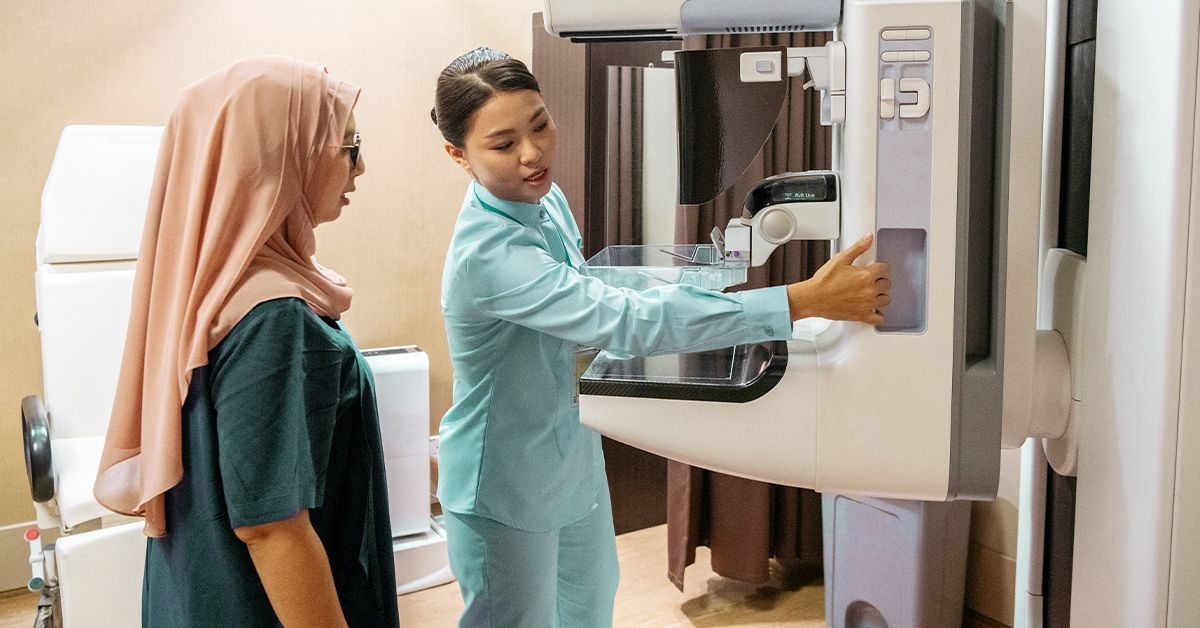FDA’s New Breast Density Rule Could Help Detect Breast Cancer Earlier


- The FDA’s new breast density rule will now require all mammography reports to include whether a person has dense breasts.
- Breast density is considered a risk factor for breast cancer and can make it difficult to detect signs of cancer.
- Dietary and lifestyle modifications may help reduce breast density, but more importantly, they help lower a person’s risk of developing breast cancer.
Mammograms are the gold standard for breast cancer detection starting around age 40.
Breast density can raise breast cancer risk and make it more difficult to detect cancer. Still, many people are unaware of this important risk factor, even if they regularly receive mammograms.
On September 10, the Food and Drug Administration (FDA) issued a
“Breast density not only has to do with intrinsic risk but the ability to detect cancer on a mammogram,” Richard Reitherman, MD, PhD, board certified radiologist and medical director of breast imaging at MemorialCare Breast Center at Orange Coast Medical Center in Fountain Valley, CA, told Healthline.
“Because the normal stromal tissue is white and cancer is white, the denser the breast, the more difficult it is to detect the cancer. This is termed ”masking,” Reitherman explained.
According to the
Reitherman explained there are two primary components in breast tissue:
- Glandular tissue — the physiologically functioning component of the breast responsible for lactation.
- Stroma — the fat and support tissue composed of mostly collagen.
Breast density refers to the amount of fibroglandular tissue in the female breast compared to fatty tissue. When there is more fibroglandular tissue, there is more breast density.
“Breast density characterizes the relative amounts of fat, glandular, and stromal tissue in a mammogram,” Reitherman explained.
When a mammogram demonstrates that 50% or more of breast volume is white, there is breast density. If the white components are less than 50%, the breasts are considered non-dense, Reitherman said.
- “The breasts are almost entirely fatty.”
- “There are scattered areas of fibroglandular density.”
- “The breasts are heterogeneously dense, which may obscure small masses.”
- “The breasts are extremely dense, which lowers the sensitivity of mammography.”
“The levels of density are characterized based on the composition of fat and dense breast tissue, Kecia Gaither, MD, MPH, double board certified OB/GYN and maternal fetal medicine specialist and director of Perinatal Services/Maternal Fetal Medicine at NYC Health + Hospitals/Lincoln in the Bronx, told Healthline.
“Heterogeneous dense [means] that most of the breast tissue is dense, but some areas are fatty. Extremely dense [means] most of the tissue is dense, with little fatty tissue,” Gaither explained.
People with more breast density have more fibroglandular tissue in their breasts, which raises their breast cancer risk.
“The glandular tissue this is where breast cancer initially develops,” Reitherman said.
“There is a complex interaction between the glandular and stromal tissue which regulates this initial tumor development and its ability to spread. The higher the proportion of stromal tissue, which is white on the mammogram, relative to fat which is black, the higher the risk of breast cancer,” he explained.
Reitherman noted the link between breast density and breast cancer risk is an actively pursued area of research that has “yielded many complex biochemical insights.”
These insights include the structural proteins, enzymes, and genetic components of breast density and how they may play a role in breast cancer development.
If your mammography report indicates you have dense breast tissue, you may require further diagnostics, especially if you have other risk factors for breast cancer, such as a family history.
Additional tests to screen for breast cancer to improve the “masking” effect that breast density can have on mammography results may include:
- 3D mammogram: X-rays that take images of breasts from various angles.
- Breast MRI: A magnetic field and radio waves that generate 3D images of the breast.
- Breast ultrasound: — Sound waves that conduct breast imaging.
- Contrast-enhanced mammogram — Contrast material that helps highlight areas of concern.
- Molecular breast imaging — A radioactive tracer and special camera that image the breast tissue.
“MRI is by far and away the most sensitive imaging technique to detect breast cancer in women with dense breasts,” Reitherman said. “Ultrasound has been also proven to improve detection of breast cancers in women with dense breasts.”
Of course, these tests may come with additional costs.
“It is clear that out-of-pocket expenses serve as a definite deterrent for patients to access these additional screening modalities,” Reitherman noted.
“However, if a woman has a lifetime risk that is 20% or greater, most insurance companies will cover annual breast MRI in addition to mammography,” he said.
There are currently no clinical guidelines to reduce breast density and no clear evidence that reducing breast density will reduce cancer risk.
Still, some studies have shown that certain factors may help decrease breast density, such as:
But breast density isn’t the only factor influencing breast cancer risk.
“Breast cancer risk appears to be a multifactorial paradigm predicated on an interplay of multiple factors inclusive of Genetics, environment, diet,” Gaither said.
If you have dense breasts, there are steps you can take to help lower your risk of developing breast cancer.
“Breast cancer is one of the most lifestyle-responsive cancers. From a preventive standpoint, it is estimated that
Gordon and Gaither recommended the following:
- Eat a healthy, balanced diet of fruits, vegetables, and whole grains.
- Limit added sugar and processed foods.
- Exercise regularly (aim for 150 minutes a week of aerobic exercise).
- Avoid alcohol.
- Quit smoking.
- Receive regular mammograms.
- Know your family history of breast cancer and assess your risk with genetic testing for the BRCA 1 and BRCA 2 genes.
- Limit hormone replacement therapy after menopause.
“Decisions on the use of and duration of hormone replacement therapy should always be individualized based on a woman’s risk for breast cancer and her quality of life and clinical symptoms, rather than a ‘prescribe for all’ approach that was common years ago,” Gordon noted.
link








